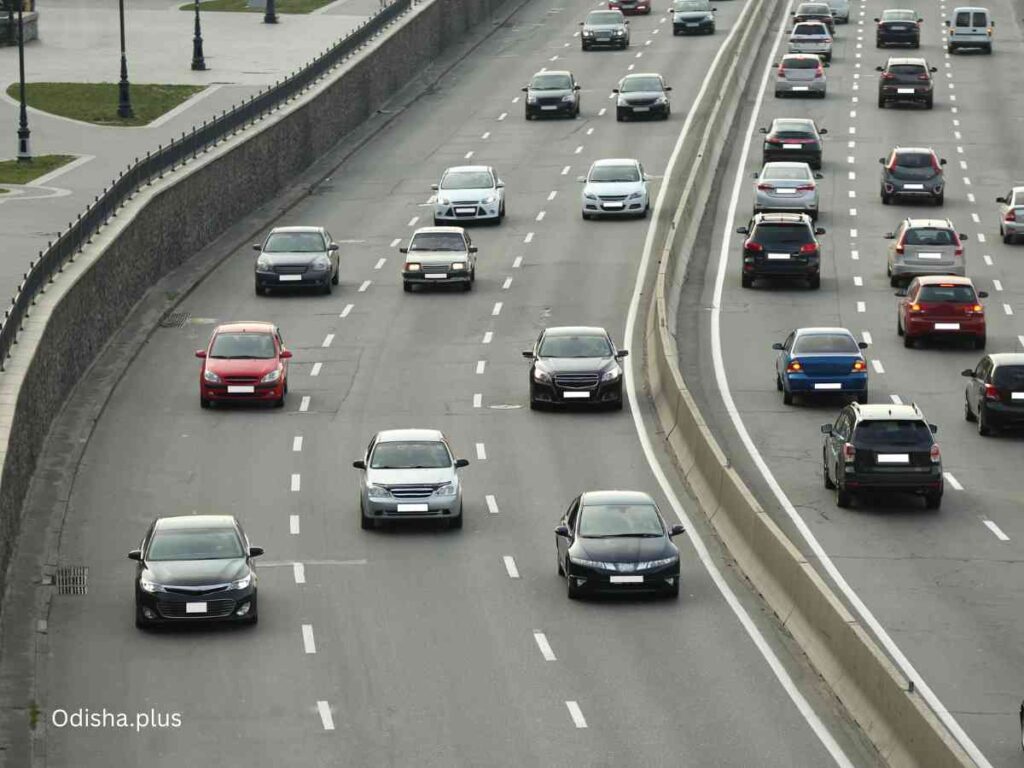Central Government has initiated discussions within the Cabinet regarding the Capital Region Ring Road (CRRR), which is intended to transform the transportation framework of Odisha’s major urban areas
OdishaPlus Bureau

The swift urban development of Bhubaneswar and its neighboring city, Cuttack, has created an urgent demand for a contemporary transportation infrastructure. Traffic congestion has long characterized these urban centers, with major thoroughfares often experiencing significant delays, especially during peak traffic times.
The busy NH-16 corridor in Bhubaneswar and the narrow roads in Cuttack frequently struggle to handle the growing number of vehicles, leading to extended traffic jams and increased air pollution.
In response to this escalating issue, the Central Government has initiated discussions within the Cabinet regarding the Capital Region Ring Road (CRRR), which is intended to transform the transportation framework of Odisha’s major urban areas, as highlighted by Union Minister Nitin Gadkari during his recent visit to the state.
The CRRR initiative, estimated to cost Rs 7000 crore, plans to construct a 111-kilometer, six-lane expressway encircling Bhubaneswar. This project will be designed and implemented by the National Highways Authority of India (NHAI) under the Bharatmala Pariyojana scheme, with the goal of efficiently connecting the cities of Cuttack, Bhubaneswar, Khordah, and Choudwar while alleviating congestion on internal city roads.
The proposed route for the CRRR will begin at Tangi in Cuttack, passing through Barapada, Rajabati, Govindpur, Shankarpur, Banki, Bandhahat, and Haldia, before ending at Rameswar in Khurda. This carefully planned alignment circumvents the heavily congested city centers, providing an alternative route for transit traffic and heavy vehicles that currently contribute to the congestion in Bhubaneswar and Cuttack.
The CRRR’s initial scale and complexity are impressive. The roadway will include nine strategically placed flyovers to ensure smooth traffic flow over major intersections, along with twenty-nine underpasses for vehicles to enable local traffic to navigate without disrupting high-speed highway operations.
Additionally, three pedestrian overbridges will be constructed to enhance safety for pedestrians in semi-urban areas. A significant bridge spanning the Mahanadi River will connect essential transit locations and further enhance intercity connectivity. Service lanes will be established on both sides of the road to provide safer access points for local traffic and minimize abrupt slowdowns on the main highway.
The CRRR is set to significantly alleviate congestion on Bhubaneswar’s central arterial routes, particularly along NH-16, which currently handles a substantial volume of interstate freight and intra-city travel. Heavy vehicles, such as trucks and long-distance buses, will be rerouted to the outer ring, thereby clearing essential urban roads for local traffic. This realignment is projected to reduce travel times through Bhubaneswar and Cuttack by as much as 40% during peak traffic hours, based on preliminary project assessments.
The Capital Region Ring Road (CRRR) will establish a high-speed transit corridor that connects major hubs such as Bhubaneswar, Cuttack, Khordha, and surrounding towns, bypassing inner city routes. This development is anticipated to significantly enhance logistics operations, facilitate interstate goods transportation, and improve emergency services by alleviating traffic congestion and reducing transit times.
Furthermore, the ring road is poised to act not only as a means of decongestion but also as a catalyst for the establishment of new economic zones, industrial parks, and residential developments along its route. Improved connectivity is expected to attract investments in peripheral regions, promoting balanced regional growth.
Research suggests that similar infrastructure initiatives in other parts of India have resulted in real estate value increases ranging from 10% to 25% in nearby areas, and Bhubaneswar is expected to experience comparable trends following the project’s completion.
Ultimately, the CRRR will represent a pivotal advancement in Odisha’s infrastructure landscape, signifying a major milestone for the capital region of the state.

























